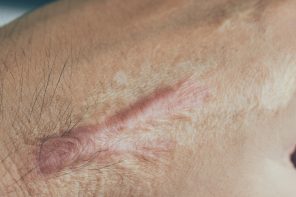Comedian and television host Jay Leno was recently treated in an Hyperbaric oxygen chamber for severe burns to his face and hands following a gasoline accident in his garage. You are probably wondering what is hyperbaric oxygen therapy and how does it work. Because wounds require oxygen for a proper healing process, the use of hyperbaric oxygen therapy (HBOT), also called hyperbaric oxygen treatment, is actually on the rise.
Hyperbaric oxygen therapy is a medical treatment that increases the amount of oxygen in a patient’s blood so it can pass more easily through the blood plasma—the liquid component of blood—and into wound tissue to heal it. During the treatment, a patient is surrounded by and breathing in 100% oxygen while in a pressurized chamber. The increased pressure helps the patient’s lungs collect more oxygen.
Hyperbaric Oxygen Therapy Treats Many Conditions
At Luminis Health Doctors Community Medical Center in Lanham, hyperbaric oxygen therapy is used to treat slow-healing diabetic wounds, bone infection, compromised skin grafts, arterial insufficiency, acute sensory hearing loss, gas embolism, gas gangrene, decompression illness, acute carbon monoxide or cyanide poisoning, crush injuries, progressive necrotizing infections that kill soft tissues, along with radiation injuries such as:
- Soft tissue radiation necrosis: When soft tissues die due to radiation exposure.
- Osteoradionecrosis: When bones die due to radiation.
- Radiation cystitis: Inflammation of the bladder and urethra resulting from treatment with radiation therapy.
- Radiation proctitis: Inflammation of the rectum occurring because of acute damage to the rectum sustained from pelvic radiation.
What to Expect During Treatment
HBOT patients are placed in a monoplace chamber that is approximately seven feet long; this hyperbaric oxygen chamber treats one person only. The patient breathes normally while in the chamber. A clinician remains close by to monitor treatment—patients can speak directly with clinicians whenever needed. Treatment can last for up to two hours, with the number of treatments ranging from 30 to 60. Every treatment is customizable to the patients’ history and diagnosis since each patient responds differently to care.
When Hyperbaric Oxygen Therapy May Not Be Appropriate
You may not be able to undergo hyperbaric oxygen therapy if you have an untreated pneumothorax, collapsed lung, COPD, pregnant and have undergone certain chemo medications.
Don’t be surprised if your ears “pop” during treatment; this is normal. If you’re feeling a little claustrophobic, the physician can give you a medication to help relax. Possible rare and temporary complications could include barotrauma, which is injury to your ears, because of changes in pressure. You may experience blurred vision which stops when treatment stops, oxygen toxicity or pneumothorax.
Ask your healthcare provider about HBOT if you’re concerned about a slow-healing wound. Medicare has approved coverage that fits the guidelines for hyperbaric oxygen therapy and most private insurance companies follow Medicare guidelines; if interested, people should still always check with their insurance company to ensure treatment is covered.



